Driven by the rapid development of computer networks and related network communication technologies, UPS (uninterrupted) is highly reliable, continuous, and with high fidelity to ensure that data, files, and graphics obtained when information resources are shared are continuously available. Power supplies are increasingly being applied to various fields of the national economy. At the same time, with the development of information technology, new technologies such as intelligent information processing and remote monitoring based on network are gradually applied to UPS, forming a fully intelligent UPS system, which facilitates users and improves reliability. This article focuses on the UPS control technology, analyzes the characteristics of the UPS PID control technology and in-depth analysis of the composite control strategy based on PID control and repeat control.
Control Strategy Overview
The digital control technology of UPS inverter has become a hot spot in the field of current inverter research. There have been a variety of inverter digital control methods, including digital PID control, state feedback control, no beat control, repetitive control, fuzzy control And so on, has effectively promoted the development of UPS technology.
Each control scheme has its own length. Although some control methods have better dynamic response speed, the harmonic distortion of the steady-state output voltage can not meet the requirements. Although some control methods have high dynamic and steady-state accuracy at the same time, it is very different from the parameter change. Sensitive, robust; some control methods have good steady-state accuracy, but the dynamic response is very poor; some control methods are limited by the hardware level, and currently can not be well applied. Therefore, an inevitable development trend is that various control schemes infiltrate each other and learn from each other to form a complex control scheme.
Digital PID control
In UPS inverter control, the most common and simplest method is PID control. The specific implementation includes voltage instantaneous feedback control and voltage and current double closed loop feedback control. Figure 1 shows the voltage instantaneous feedback control.
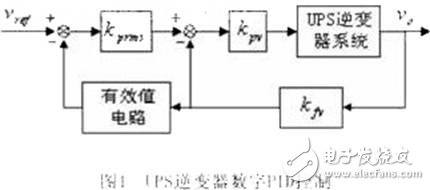
The advantage of the control strategy of voltage instantaneous feedback is that only one voltage sensor is used. The disadvantage is that the dynamic response of the system is not good, the tracking characteristics are not very good, and the waveform quality is not good. Figure 2 shows the output voltage waveform when a capacitive load is applied to a 10KVA inverter using this control method. It can be seen from the figure that the waveform distortion is large and it is difficult to meet the requirements of high quality power supply.
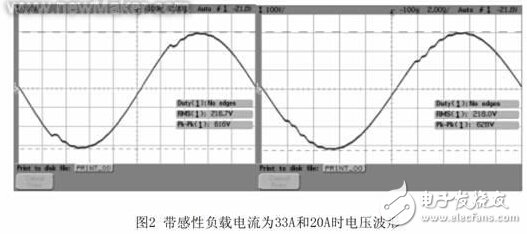
One way to improve the dynamic characteristics of a voltage source inverter is to add a current closed loop. In this control strategy, the current of the filter capacitor (that is, the differential of the output voltage) is introduced as a feedback variable into the control system to improve the quality of the output waveform. It must use a Hall sensor to detect the filter capacitor current, increasing the System complexity and cost.
Compound Control Based on PID Control and Repeated Control
The inverter controller is a reference system that gives a sinusoidal variation rather than a constant-valued regulation system. At the same time, the system disturbance, that is, the load current, is not a constant value disturbance. When the load is connected, the load current changes sinusoidally. When the load is nonlinear, the current changes in a non-sinusoidal manner. For the problem of no-difference tracking of sinusoidal instructions, a sinusoidal signal model with the reference given frequency can be placed in the controller.
The purpose of the feedforward control is to improve the control effect of the digital PID controller, further reduce the fluctuation of the output voltage and waveform distortion in the dynamic process, and improve the stability of the digital PID control system. A discrete repeat controller is used to eliminate the periodic tracking error of the system and reduce the output voltage waveform distortion when the UPS inverter has a nonlinear rectification load. The digital PID controller functions to adjust the output voltage tracking error in real time and reduce the output voltage fluctuation and distortion when the system is disturbed. The control block diagram is shown in Figure 3. The main links in the figure are as follows:
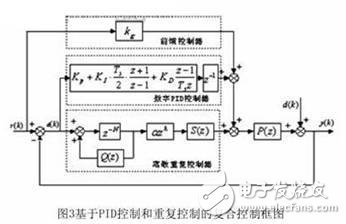
1) z-N: The cycle delay link causes the current cycle error information to affect the correction amount from the next cycle.
2) Q(z): Set to overcome the inaccuracy of the object model and enhance system stability. A constant less than 1 can be taken.
3) S(z): compensation link for modifying object characteristics.
4) zk: phase compensation to meet system frequency response requirements.
5)a: Scale factor. Used to maintain the stability of the system.
Experimental results
In accordance with the above model, the simulink simulation can be used to determine the parameters of the controller initially and begin testing with conservative parameters on the 10KVA inverter module. Adjusting the parameters enables the system to achieve better static and dynamic characteristics. The system parameters are: input DC voltage 200V, output frequency 50HZ, switching frequency 19.6HZ, filter inductance 120uH, filter capacitor 15uF. The left side of Figure 4 shows the voltage and current waveforms with a resistive load at a current of 36A; the right shows the voltage and current waveforms at a current of 20A with a rectifier load.
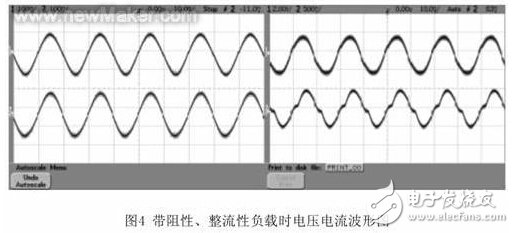
As can be seen from the above two figures, the composite control strategy based on PID control and repetitive control has better waveform control effect, especially for non-linear rectified loads with good harmonic suppression effect, and the system also has good dynamics. Response characteristics. Therefore, the compound control strategy based on PID control and repeat control introduced in this paper has a high application value.
ZGAR Disposable Vape
ZGAR electronic cigarette uses high-tech R&D, food grade disposable pod device and high-quality raw material. All package designs are Original IP. Our designer team is from Hong Kong. We have very high requirements for product quality, flavors taste and packaging design. The E-liquid is imported, materials are food grade, and assembly plant is medical-grade dust-free workshops.
Our products include disposable e-cigarettes, rechargeable e-cigarettes, rechargreable disposable vape pen, and various of flavors of cigarette cartridges. From 600puffs to 5000puffs, ZGAR bar Disposable offer high-tech R&D, E-cigarette improves battery capacity, We offer various of flavors and support customization. And printing designs can be customized. We have our own professional team and competitive quotations for any OEM or ODM works.
We supply OEM rechargeable disposable vape pen,OEM disposable electronic cigarette,ODM disposable vape pen,ODM disposable electronic cigarette,OEM/ODM vape pen e-cigarette,OEM/ODM atomizer device.

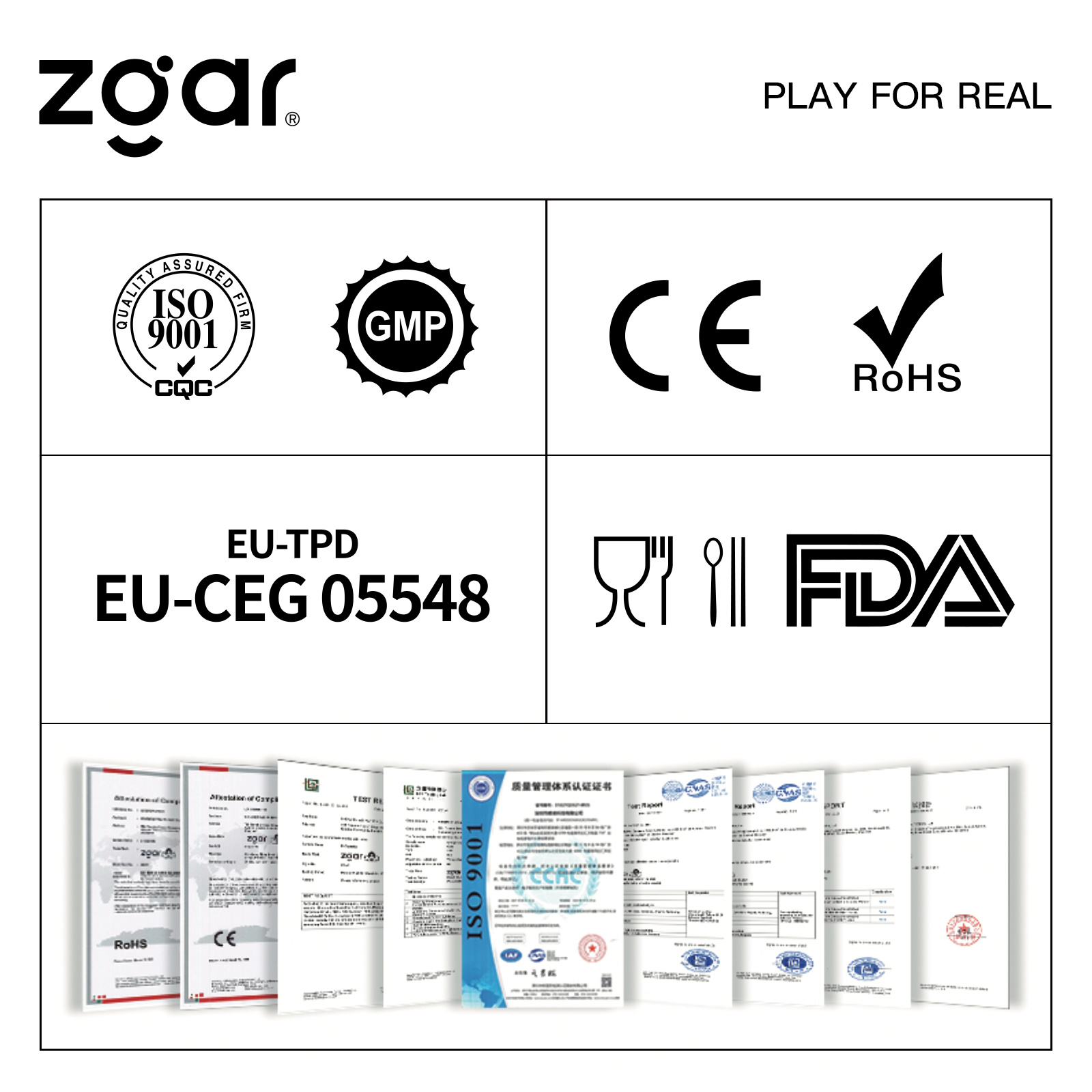
Disposable E-cigarette, ODM disposable electronic cigarette, vape pen atomizer , Device E-cig, OEM disposable electronic cigarette
ZGAR INTERNATIONAL(HK)CO., LIMITED , https://www.sze-cigarette.com
